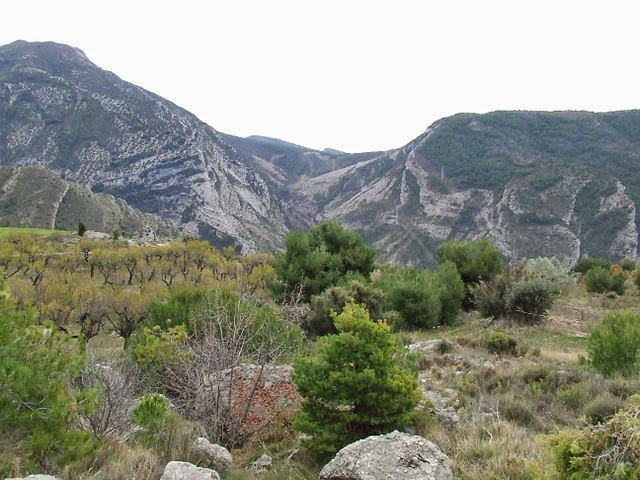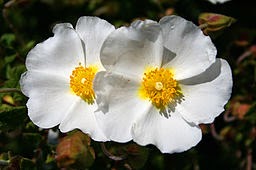By Helen Roberts
New plant species are discovered all the time. But it is not typical for plants to be discovered in areas that have been meticulously surveyed. Last year, however, a thoroughly unusual species was found on an island in the Kagoshima prefecture, Japan [1].
 |
| Gastrodia kuroshimensis is a mycoheterotroph discovered last year in Japan. Photo credit:Kenji Suetsugu/Kobe University |
Gastrodia kuroshimensis neither photosynthesises nor flowers. Certainly by no means an ornamental showstopper, it is undoubtedly odd looking with fleshy tubers, the absence of leaves and no flowers. In essence, it resembles a pathetic looking fungal protuberance. Strangely enough, it is not a fungus, but a vascular plant. The fact that it does not photosynthesise means it belongs to a peculiar group of plants that are called mycoheterotrophs, which get all or some of their nutrients from a host fungi attached to a vascular plant. The newly found species, Gastrodia kuroshimensis, is what is termed ‘fully’ mycoheterotrophic in that it depends entirely on its association with the fungus throughout its lifecycle. The relationship between it and the host fungi is not mutualistic – it takes all it needs while offering nothing in return. In other words, it’s a big fat cheat.
Mycoheterotrophs parasitise fungi, which are in turn getting their nutrients from a host plant. The fungi that are preyed upon by these cheaters are usually mychorrizal fungi, with mycoheterotrophs often parasitizing a specific arbuscular mycorrhiza (arbuscular mycorrhiza are those that penetrate the cortical cells of plant roots). In this sense, they are dissimilar to parasitic plants like dodder, which obtain their nutrients by directly taking what they need from the vascular tissue using an adapted root.
Who wants flowers?
The second interesting thing about Gastrodia kuroshimensis is that it is entirely cleistogamous, producing flowers that never blossom. Most plants also produce chasmogamous (cross-pollinating) flowers; it is extremely rare to find plants that are entirely cleistogamous. The term cleistogamy means ‘closed marriage’ and the plant produces flowers that are self-fertilised within closed buds. It is essentially a way of ensuring reproduction [2].
The evolutionary reasons are still a puzzle, but it is considered a way of safeguarding fertilisation if suitable pollinators are not around or they have somehow missed the plant or if environmental conditions are not conducive. It can also aid plants in adapting to local habitats, where both sets of maternal genes are passed onto the progeny, thereby removing harmful gene variants. Being cleistogamous also use fewer resources; flowers that are chasmogamous require more energy to produce. However, in most cases chasmogamous flowers are beneficial as they help to provide variability necessary for adaptation, hybrid vigour and negate the effects of deleterious mutations. The reasons for complete cleistogamy remain unresolved but the discovery of Gastrodia kuroshimensis may well help to answer some of these questions.
Other fungi tricksters
Other plants that fall under the mycoheterotrophic category are orchids, monotropes (a subfamily of Ericaceae), members of the Gentian family, certain liverworts and the gametophyte stages of ferns and clubmosses. Some are quite attractive if you like the look of fungal fleshy looking vascular plants with varying hues of red, white and cream. Some are even striped red and white and so commonly known as candystick. Whatever their appearance though, they are unquestionably interesting. But because or their size and rarity they often go unnoticed, lingering in the background like villainous free-loaders.
Mycoheterotrophs at the University of Bristol Botanic Garden
| The inflorescences of toothwort in the pollinator display this week at the Botanic Garden. Photo credit: Andy Winfield |
A wonderful example of a mycoheterotroph at the Botanic Garden is toothwort (Lathraea squamaria L.). It spends most of its time below ground, but in April it sends up aerial inflorescences about 20-25 cm tall. These were in their full glory in the garden a couple of weeks ago, but can still be seen (see photo) in both the pollinator display on the left as you walk in the main gate, or at the east gate.
Unlike Gastrodia kuroshimensis, toothwort flowers are bisexual and pollinated by bumble-bees.
Stop in over the weekend if you get a chance and have a look at this interesting plant.
Sources:
[1] Kobe University. (2016). Plant discovered that neither photosynthesizes nor blooms.
< https://www.sciencedaily.com/releases/2016/10/161014092115.htm>
[2] Allaby, M. (2016). Plant Love: The scandalous truth about the sex life of plants. Filbert Press, pp. 98-103.







